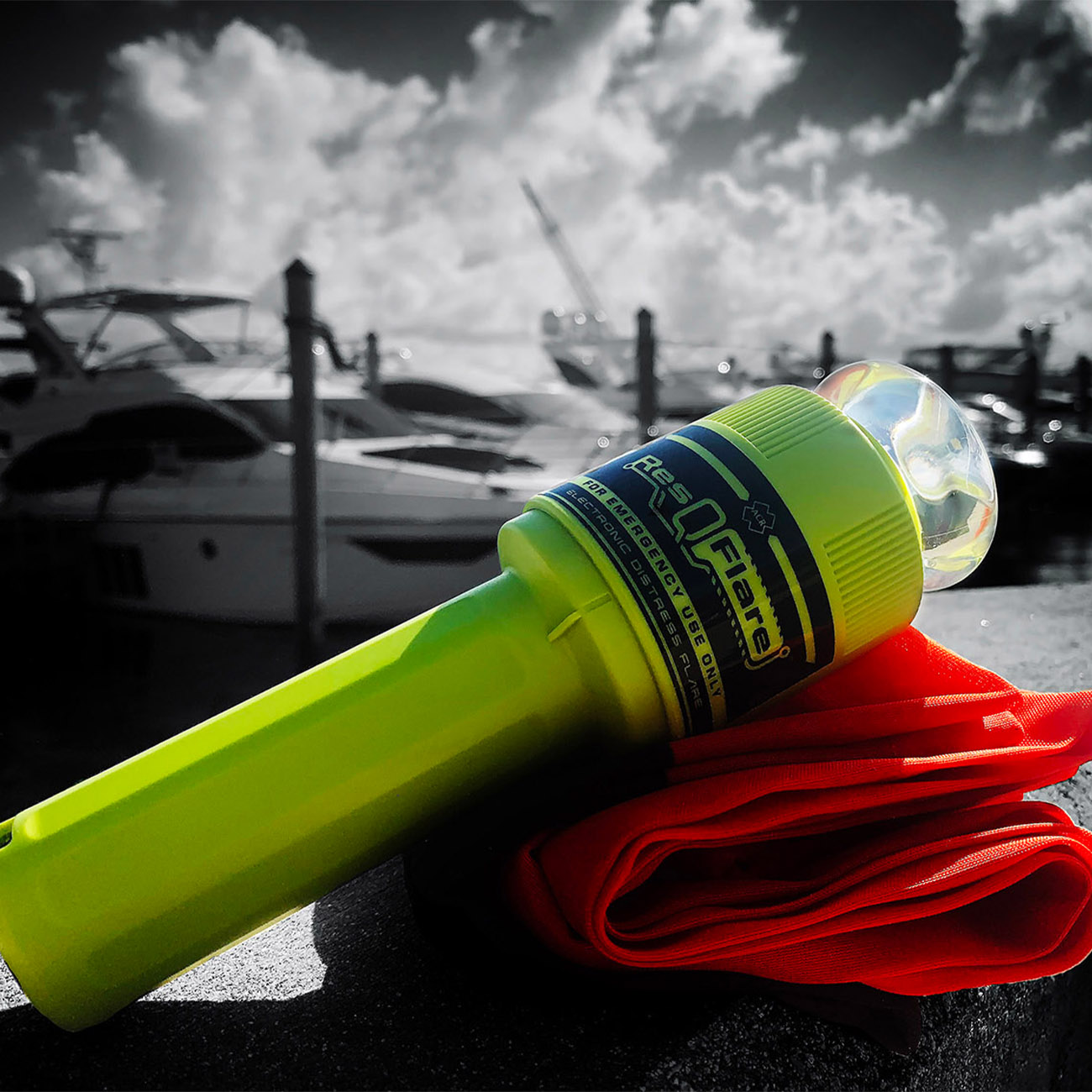 boat flare
boat flare
What Is A Marine E-Flare?
Posted on December 15, 2022
Electronic Flares or E-Flares are one of the new hot marine safety products replacing traditional pyrotechnic boat flares (where approved in select countries like the USA). A marine E-flare is a battery-operated bright light that flash the Morse code S-O-S distress signal which can replace red handheld pyro marine flare as required nighttime distress signals. When paired together with a USCG approved orange distress flag that meets the day visual regulation, you have a combined solution that the US Coast Guard has approved as a replacement for pyrotechnic hand flares or parachute flares.
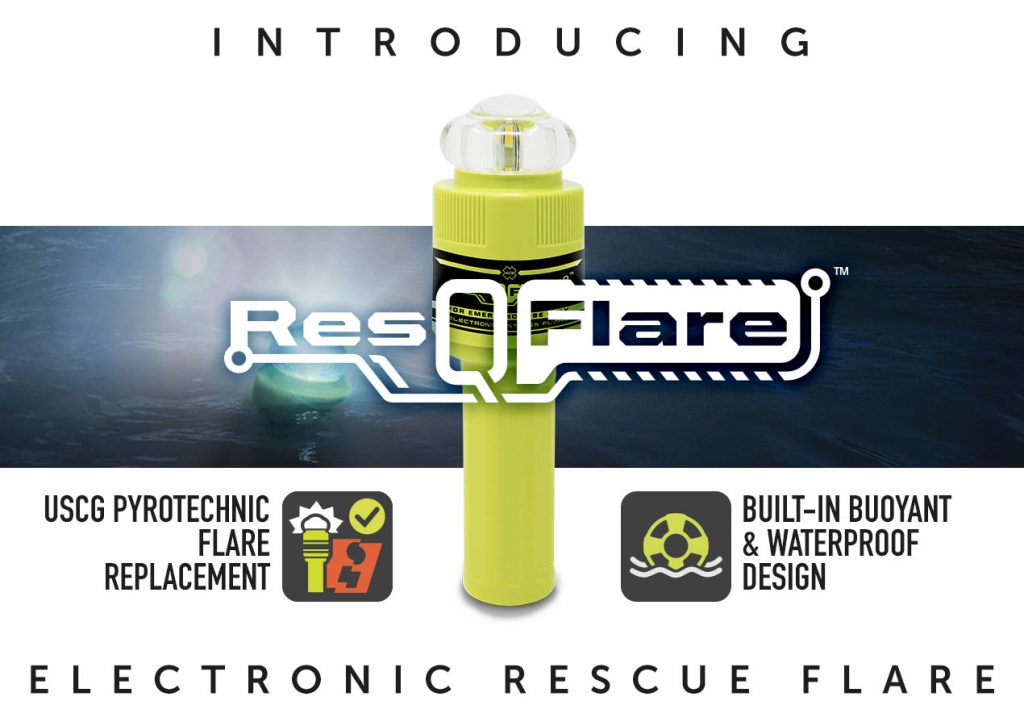
Are Marine Electronic Flares USCG Approved?
Electronic Marine Flares, like the ACR ResQFlare, must be certified under USCG 161.013 as a Night-time Visual Distress Signal, with an Orange Marine Distress Flag that is certified under USCG 160.072 as a Daytime Visual Distress Signal. Carriage of the ResQFlare and Distress Flag together allows boaters to forego the requirement for traditional pyrotechnic flares when on vessels up to 65 feet in length, boating on the Great Lakes, within 12 miles of US waters, or on any body of water with a passageway to the sea at least two miles wide.
Boats less than 16 feet in length are not required to carry a Day Visual Distress Signal, but must still carry a Night Visual Distress Signal, making the ResQFlare a viable alternative to pyrotechnic boat flares for smaller boats.
Learn more about the Legal Requirements of Electronic Boat Flares
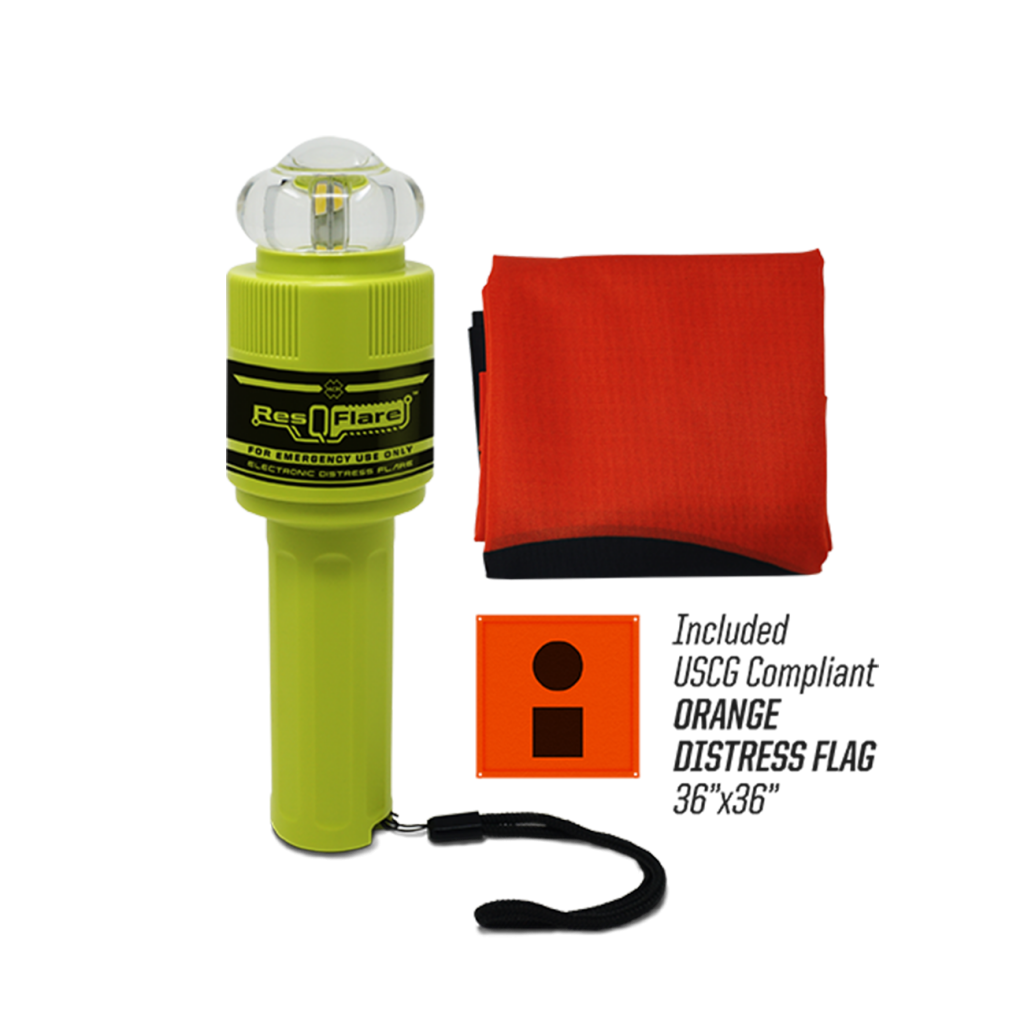
What Are The US Coast Guard Boat Flare Requirements?
Boats operating in. coastal waters, the Great Lakes, and territorial seas, as well as those waters connected directly, up to a point where the waterway is less than two nautical miles wide, must be equipped with U.S. Coast Guard-approved visual distress signals (VDS). Vessels owned in the United States and operating on the high seas must also be equipped with U.S. Coast Guard-approved visual distress signals.
The following vessels are not required to carry day signals, but must carry night signals when operating from sunset to sunrise in areas where Visual Distress Signals or VDS are required:
- Recreational boats less than 16 feet in length. Boats participating in organized events, such as races, regattas, or marine parades.
- Open sailboats less than 26 feet in length that are not equipped with propulsion machinery.
- Manually propelled boats
-
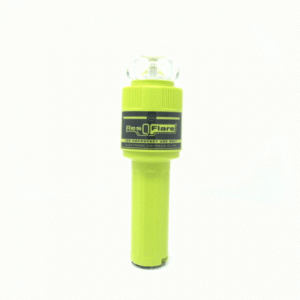 ResQFlare$84.95
ResQFlare$84.95 -
Product on sale
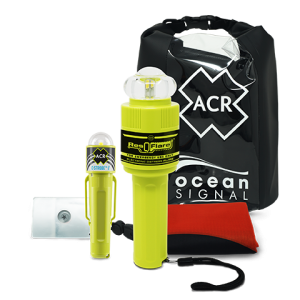 ResQFlare Safety Kit$89.95
ResQFlare Safety Kit$89.95
What Boat Flares Meet The USCG Regulations
Pyrotechnic Marine Flare Options
If pyrotechnic devices are selected, a minimum of three signals are required for day use and three signals for night use. Some pyrotechnic signals meet both day and night use requirements (combination flares). Pyrotechnic devices should be stored in a cool, dry place, if possible.
- Pyrotechnic red flares, hand-held or aerial (day/night use)
- Pyrotechnic oranges smoke, hand-held or floating (day use)
- Launchers (Flare Guns) for aerial red meteors or parachute flare
Electronic Marine E-Flare and Flag Options
Non-pyrotechnic visual distress signals must be in serviceable condition, readily accessible, and certified by the manufacturer as complying with U.S. Coast Guard requirements.
- Electronic Boat Flares (Must meet U.S. Coast Guard requirements in 46 CFR 161.013 for night use)
- Orange Distress Flag (Must meet U.S. Coast Guard requirements in 46 CFR 160.072 for day use)
The ResQFlare (model: LNK-ERS1) boat flare is listed on the U.S. Coast Guard website as ACR ResQFlare (Model LNK-ERS1). Click this link to view the ACR ResQFlare listing on the U.S. Coast Guard Approved Equipment List or Click this link to view the ACR Distress Flag listing on the U.S. Coast Guard Approved Equipment List.
Benefits of E-Flares Vs. Pryo Flares
- No expiration date
- E-Flares will last for hours versus marine pyrotechnic flares only lasting for seconds
- Family safe (no burning flame)
- Easy to operate (so even your kids and first-time boaters can operate it in the event of an emergency)
- No issues with the existing stringent mandatory disposal requirements for pyrotechnic flares (legally considered as hazardous materials)
- Waterproof and Buoyant
- One-time purchase (less cost over the life of the product)
- Easy online purchasing without having to pay hazmat shipping expenses
Flare Expiration Dates
Pyrotechnic boat flares including aerial flares and handheld flares and smoke flares, expire 42 months after the date of manufacture in accordance with the Coast Guard requirements. Expired marine flares may be carried as extra equipment, but cannot be counted toward meeting the visual distress signal requirement by the Coast Guard.
Resources:
Additional information on Visual Distress Signals can be found in the U.S. Coast Guard’s pamphlet “A Boater’s Guide to the Federal Requirements for Recreational Boats.”
Boat Flare Disposal
Disposing of expired or unwanted marine pyrotechnic flares requires incineration at an authorized facility. Because flares contain perchlorate, they can not be thrown into the trash because the chemical leaches into the drinking water and has been known to cause cancer. It is also illegal to light flares in non-emergency situations as this can create an expensive false alarm for search and rescue.
The U.S. Coast Guard is aware that flare disposal facilities are limited and are working on finding viable solutions for boaters around the country, including the approval of more Electronic Marine Flares that do not pose environmental safety or disposal concerns.
According to the SeaTow Foundation, the below are you best options to properly dispose of marine pyrotechnic flares in your local area:
- Contact the household hazardous waste management facility in your area and ask if they accept boat flares for disposal. This may be a landfill or a transfer station.
- If that doesn’t work, contact the local fire department and ask if they accept flares for disposal.
- If that doesn’t work, contact the state boating law agency and ask them for recommendations for flare disposal in your state.
- NEVER jettison visual distress signals overboard.
- NEVER activate marine flares in a non-emergency situation on or near regulated water.
- NEVER dispose of flares in household trash.
In the meantime, the Sea Tow Foundation is committed to helping to educate boaters on the safe use of flares as well as encouraging boaters to purchase electronic flares instead of pyrotechnic flares to avoid the need to dispose of them in the future.
Marine Flare Safety
Pyrotechnics are currently the most common visual distress signals, but there is potential for injury and property damage if not handled properly. These devices produce a very hot flame with the potential to cause burns and ignite flammable materials. Pistol-launched and hand-held parachute flares and meteors have many characteristics of a firearm and must be handled with extreme caution. In some states and Canada, they may be considered a firearm and prohibited from use. Be sure to check with your state boating agency.
For Pyrotechnic Marine Flares, it is highly recommended to also purchase and keep with your pyrotechnic flares the following protective gear:
- Heat resistant Goggles for eye protection: Typically cost around $19.99
- Heat resistant gloves to prevent burns on your hand: Typically cost around $29.99
How To Use A Boat Flare
1. Figure Out The Wind Direction And Use Downwind
- If you are in a life raft or floating in the water this will be a little more difficult than if you are standing on your boat. You want to be downwind so that any dangerous debris falling off the burning pyrotechnic does not damage your life jacket or harm you.
2. Read The Flares Instructions
- Best to do this well in advance of ever actually needing to ignite a pyrotechnic flare in an emergency. E-Flares should be tested randomly by activating for a short period of time.
3. Wear Eye Protection
- Probably not what you are thinking about doing when in a life saving emergency, but if the wind shifts or you are not downwind the debris from a pyro marine flare can be dangerous to your eyes.
4. Aim Flares Away From You
- Always wear a pair of heat-resistant gloves when using flares to avoid burning your hands. Always try and point handheld boating flares away from you as far as possible to avoid any falling debris landing on your arms or life jacket. When using an E-Flare, simply activate the light and either hold the E-Flare in your hand, place it in a rod holder, hang it on the boat, or even just let it float in the water.
5. Look The Other Way
- When you ignite the flare be sure to look in the opposite direction as flares are extremely bright and can damage your eyes looking at that from a close proximity. With E-Flares this same principle is also true, avoid looking directly at the flashing light.